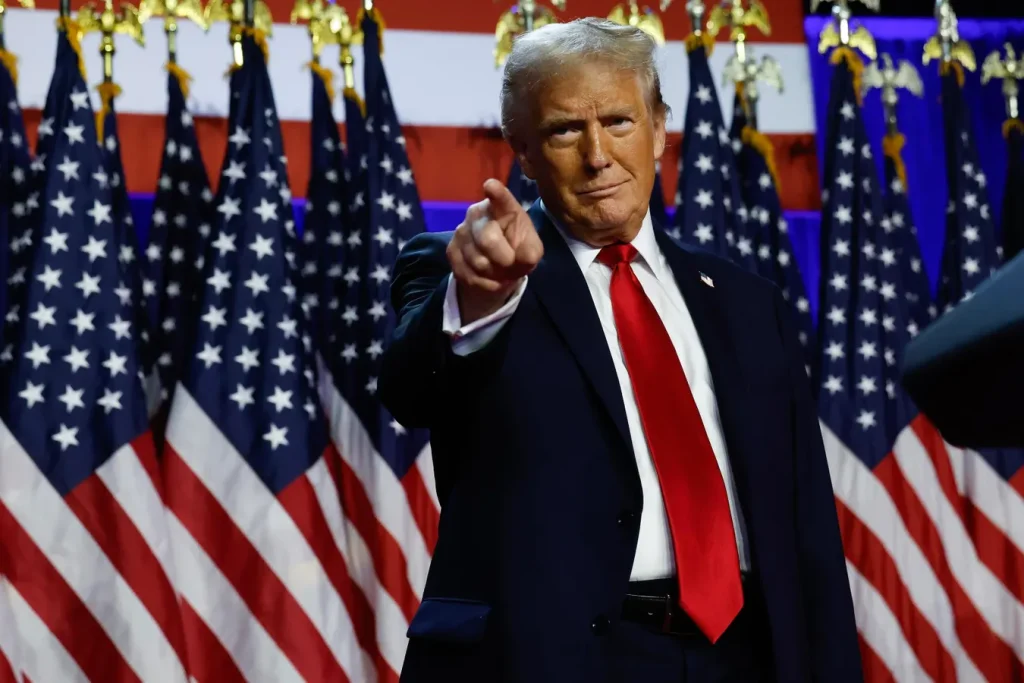The Trump Administration’s Market Influence: A New Era of Presidential Market Moves
In the complex world of financial markets, beating the benchmarks has always been a challenging endeavor for investors. However, an interesting pattern has emerged during President Trump’s recent administration: when the White House signals interest in specific companies or markets, those assets often experience significant upward movement. This unconventional dynamic between presidential messaging and market performance represents a departure from traditional presidential market influence, raising both opportunities for investors and ethical questions for observers.
The pattern became evident again recently when GameStop shares jumped more than 2% after the White House shared the company’s social media post about the “Halo” video game series coming to PlayStation. The official account added an image of Trump as the game’s hero with the caption “Power to the Players” – GameStop’s slogan. While not an explicit investment recommendation, traders interpreted it as a positive signal. Similarly, Argentina’s markets surged following midterm elections that strengthened President Javier Milei’s position – a leader strongly endorsed by Trump. The Global X MSCI Argentina ETF jumped an impressive 18% in early trading, coming after the U.S. Treasury had invested over $1 billion in stabilizing the peso. These subtle endorsements, while not direct stock tips, resulted in immediate profits for investors who recognized the pattern.
These market movements join a growing list of rallies following what appear to be market tips from the Trump administration. Some signals have been surprisingly direct, such as when Commerce Secretary Howard Lutnick appeared on Fox News in March and explicitly told viewers to “buy Tesla.” This unusual recommendation came after Tesla shares had fallen significantly following controversies related to Elon Musk’s involvement with the administration. The stock has since rallied approximately 80%. Even more striking was an episode in April when Trump himself announced sweeping global tariffs that initially sent stocks tumbling, then posted on Truth Social that it was a “great time to buy,” before temporarily pausing many of the tariffs hours later. This sequence triggered a remarkable 9.5% jump in the S&P 500—its third-largest single-day gain this century—and raised questions about potential insider trading, though no evidence has emerged to support such concerns.
Energy markets have also been affected by this pattern of presidential influence. In October, Energy Secretary Chris Wright described oil as a “bargain” on Fox News, noting that prices were low and revealing that the U.S. would gradually rebuild its Strategic Petroleum Reserve. The very next day, the administration announced new sanctions against Russian oil companies, sending oil prices soaring by 5%. This sequence of events—public commentary followed by policy actions that benefit those who acted on the commentary—has become increasingly familiar during this administration, blurring the line between enthusiasm for certain industries and potential market influence.
While presidents have always moved markets through policy decisions—like when George W. Bush’s administration took over Fannie Mae and Freddie Mac during the 2008 housing crisis, causing a 3% jump in the S&P 500—what distinguishes the current situation is the personalized nature of the market commentary. Traditional presidential market influence typically stems from broader policy initiatives rather than what appears to be preferences for specific companies or investments. Ethics experts have been analyzing these patterns, with many concluding that the behavior doesn’t technically constitute insider trading, which requires trading on “material nonpublic information” obtained improperly. Since these are public comments, they don’t meet the legal definition of wrongdoing. However, many experts note that while perhaps not illegal, this approach represents a significant departure from the typical behavior of government officials regarding private investments.
For investors watching these patterns, the so-called “Trump trade” has proven remarkably effective, regardless of whether one views it as fortunate coincidence or something more deliberate. The administration’s market signals—ranging from social media posts and cabinet member interviews to policy announcements—have repeatedly preceded significant market movements. This unprecedented relationship between presidential messaging and market performance raises important questions about the evolving role of executive influence in financial markets. As this pattern continues, market participants must decide whether to incorporate these signals into their investment strategies while policymakers and ethicists grapple with the implications of this new form of presidential market influence. What remains clear is that the intersection of presidential communication and market performance has entered uncharted territory, creating both opportunities and concerns that merit continued attention.


